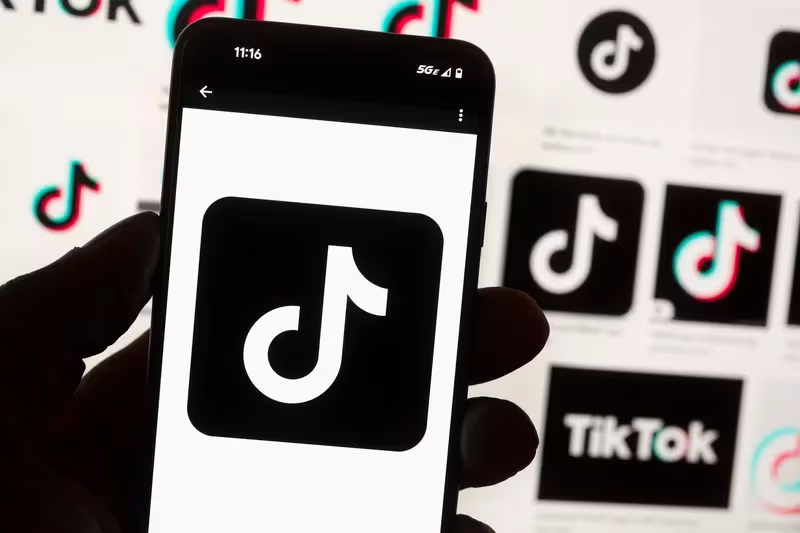
President Joe Biden signed new legislation in April that would effectively ban TikTok unless the owners divest from the platform. A potential ban could have major impact on how companies of all sizes engage with customers.
President Joe Biden signed new legislation in April that would effectively ban TikTok unless the owners divest from the platform. Many experts believe a buyer will be found for the social media video platform that has 150 million active users in the U.S. The company’s current owners have also filed a lawsuit contesting the ban, which could also cause further delays.
However, a potential ban could have major impact on how companies of all sizes engage with customers.
There are three types of small businesses that make money from TikTok.
-
Creators who earn revenues from affiliate links, sponsors and “creator funds” from generating short-form videos and other content.
-
Small businesses that directly sell their products by linking to landing pages.
-
Small businesses that advertise.
TikTok says that its platform drives more than $15 billion in annual revenues for their small business content creators, sellers and advertisers on their platform.
“A ban on TikTok could not only disrupt businesses’ accessibility to their audience but also lead to a significant financial loss for them,” said Marissa Bruette, vice president of digital marketing at Slice Communications in Wilmington. “This is particularly concerning for those who have found a niche on the platform and rely heavily on it for their marketing efforts.”
If you or your company will be impacted by a ban of TikTok in early 2025, here are a few things you can do right now.
Plan ahead
It’s critical to make and start implementing an alternative plan sooner rather than later.
“While the sale vs. ban discussions continues, any decision will unlikely affect your 2024 marketing strategies,” Bruette said. “However, it’s crucial to start considering the implications for 2025. This foresight will allow you to begin testing other strategies, specifically for small businesses and creators, and be prepared for any potential changes.”
For many influencers and advertisers, their TikTok presence has been built over a period of time so it’s going to take some time to build an audience elsewhere. The good news is that there are alternatives.
Consider alternative platforms
The two main competitors to TikTok are Instagram Reels and YouTube Shorts, both of which attract hundreds of millions of eyeballs. But other social media platforms like Snapchat, Facebook, X (formerly Twitter), Pinterest or even lesser-known platforms like Triller also have engaged audiences. All of these social media sites offer video capabilities similar to TikTok. But they also have their own unique features, and new users will require time to get up to speed and build a new audiences.
“Fortunately, there viable alternatives without requiring a drastic shift in your video strategy,” Bruette said. “It may be a good idea to find a small budget to create content on a new platform and use the platform’s specific targeting segments that will allow you to reach your niche audience on that channel.”
Revisit your target audience
Choosing the right platform really depends on where your audience is. Amy Jennette, a senior director of brand marketing at website host GoDaddy, says that it’s important to take the time, survey some of your followers, and truly understand where they engage.
“The same audience that likes your content or clicks on an advertisement on TikTok might also be as active on Facebook or X,” Jeannette said. “The TikTok ban may be another opportunity for you to connect with that audience and to expand your reach in areas that you didn’t previously consider.”
Expand your website
Regardless of the social platforms you choose, Jennette says it’s critical to have a good website to support your online activities.
According to a recent survey from GoDaddy, 91% of small business owners think they offer a convenient online experience while just 21% of consumers agree. The overwhelming majority of young consumers (80% of Gen Z and 75% of millennials) said it’s that important small businesses have storefronts linked to their social pages for easy shopping.
“TikTok creators and sellers should right now be building a website that’s your home base for you to reach and transact with your audience,” she said. “The great thing about your website is that you make it whatever you want. You’re not confined to a time limit or format on your videos, and you can supplement your videos with blogs and other content.”
Jennette says that having a website to support your social activities on other platforms will also help build email lists of engaged followers and provide a centralized place to sell your products and promote your brand.
“With a website, you can engage with your followers regardless of what other platforms they’re on,” she said.
Collaboration is also important
Small businesses routinely lack the resources to expand to all the markets they desire, and social media markets are no different. One way to address that issue is to collaborate with others. The potential TikTok ban provides a good opportunity to consider potential partners — such as other influencers — as well as to expand and diversify where they’re active.
Bruette recommends that influencers add multiple channels to their portfolios and then incorporate commitments in their contract negotiations with sponsors and advertisers to create content across all of these platforms.
“Collaborating with brands across various channels diversifies income streams and enhances long-term sustainability,” she said. “The potential ban could significantly impact the reach and engagement of influencers, making it crucial to secure collaborations and contracts across multiple platforms to mitigate the potential loss of income. Begin looking for brands that have various channels and begin creating content for each of them.”
文章来源:Philly.com
TKFFF公众号
扫码关注领【TK运营地图】

TKFFF合作,请扫码联系!







 闽公网安备35021102002035号
闽公网安备35021102002035号